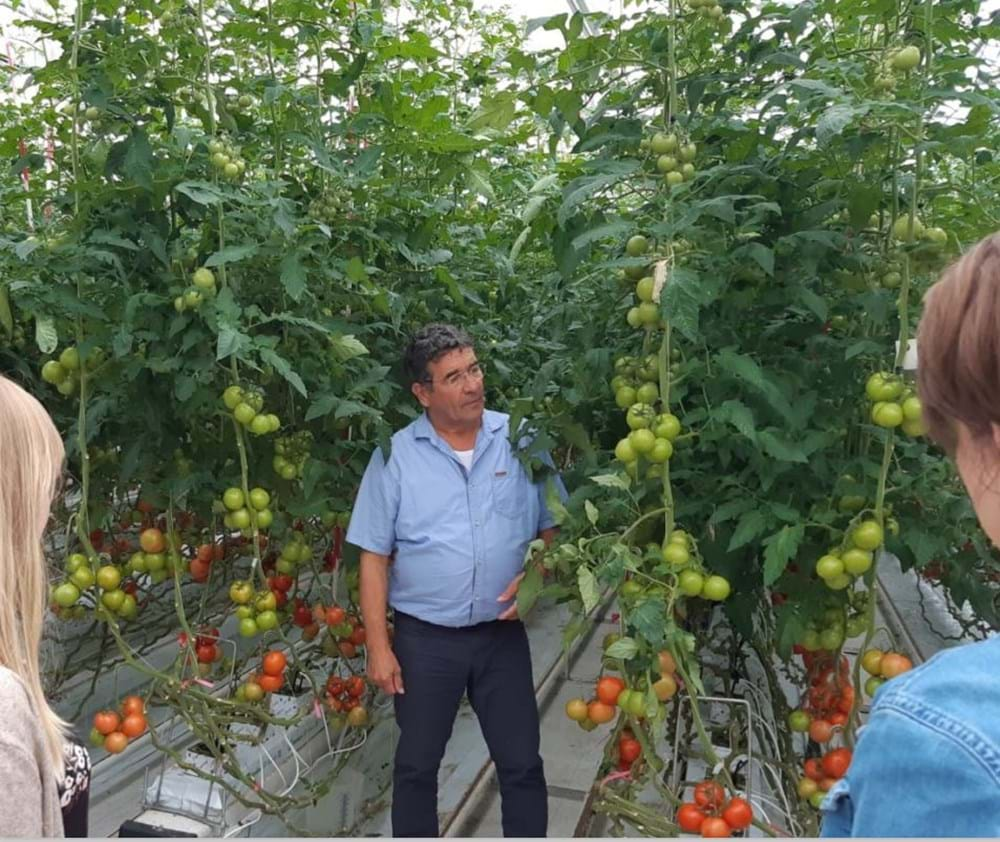He is still actively involved in HortiTech, but now that he is approaching retirement age, he mainly focuses on preparing 'his boys'. In our conversation with Peet van Adrichem we discuss how the company uses Dutch expertise worldwide to stimulate the agricultural sector. Peet emphasizes the crucial role of knowledge building, training and consultancy for foreign growers. We also explore some innovation projects that Peet is proud of and discuss the importance of collaboration within the horticultural sector. In short, a fascinating conversation that is steeped in knowledge and experience.
The first question comes from Ad van Kester, with whom we had a conversation last time: As director of HortiTech, how do you use Dutch expertise to stimulate the growth of the agricultural sector worldwide, especially in tomato cultivation?
Peet: “We build knowledge by conducting research and offering training and consultancy to foreign growers. We try to convey practical knowledge, such as which systems and facilities are really needed, depending on different climate zones. We also train people who are new to the sector and provide remote support by implementing and monitoring self-regulatory systems. Our role is to bridge the gap between theoretical knowledge and practical application. This automatically applies to the tomato cultivation that Ad is talking about, because this is simply the largest market abroad in which the Netherlands is a major player.”
Can you name a project or initiative with which HortiTech is helping the sector grow worldwide through Dutch knowledge?
Peet: “Plantonomy from Priva is a good example of this. Thanks to monitoring and sensors, growers can be helped remotely. Plantonomy is a cloud-based service that uses smart algorithms to control the plant's water management in a biorhythm. As a result, the crop follows a daily rhythm of water absorption and transpiration, resulting in even development of all plant parts and uniform production and quality. The system autonomously controls the climate and watering by controlling the settings relating to irrigation, ventilation, heating, shading and lighting of the greenhouse every five minutes.”
“I very much believe in the future of AI. Plantonomy is a good example of this. We are involved in several projects aimed at collecting, analyzing and using data to improve efficiency and productivity in the greenhouse horticulture sector.”

Speaking of innovation, you have collaborated on many innovation projects in your long career, which ones are you most proud of?
Peet: “One of these is our joint initiative with Metazet to promote growing on gutters. When we set up the demo nursery in 2000, this technology was hardly in use. But through our work, in combination with study clubs and collaborations with various parties, we have successfully introduced this method into large-scale horticulture. This has had an enormous impact and has made large-scale cultivation possible.”
“I am currently also working on a great project that I am proud of and strongly believe in, namely growing tomatoes in water. This innovative system is completely closed, so that the water is efficiently reused. This allows us to grow in a cleaner and more sustainable way than with traditional methods such as rock wool. We are also exploring the possibility of using brackish water, which is an interesting option, especially outside the Netherlands. We are working together with Growers United on this project, and we are very happy with that.”
“In the past, during the time of the demo nursery, we worked together with participants. That model is different now. Now we choose the best partner to work with for each project, which works very well.”
How important is collaboration in the horticultural sector?
Peet: "Very important. We live in a time when people seem to be in more of a hurry, but that is not always a good thing. Sometimes it is important to take some time, visit each other and talk. We still take the time to sit down and talk to each other. I believe that by bringing people together, both young and old, and providing space for open conversations and exchange of ideas, we can work together to build a sustainable future for the horticultural sector.”
“In the new greenhouse that we are currently working on, we consciously create a pleasant corner with nice chairs and good coffee. This invites you to sit down and talk to each other. This is how we often come up with new ideas. If you know that someone is working on a certain project, you can do something with it.”
With the growing demand for sustainable agricultural practices, how do you see the role of the greenhouse horticulture sector in reducing the environmental impact of food production? And what role does HortiTech play in this?
Peet: “We do much more in greenhouse horticulture than everyone thinks. With the CHPs we use alone, we supply a considerable amount of electricity back to the grid. Not everyone sees or knows that. To make the impact of this visible, you would actually have to turn off all CHPs on a day when the Netherlands needs it, such as the second day of Christmas, for example. Of course we are not going to do that, but just to indicate what the impact is.”
“At HortiTech we take sustainability and technological innovation for granted and this applies to many greenhouse horticulture companies. There are still gardeners who grow the old-fashioned way and pollute. That is a shame and unnecessary. Added together, that's still about 500 hectares in total. And that's quite big. That must and can be done differently, but that will take time. And don't forget that in the meantime 'green' companies are constantly increasing.”